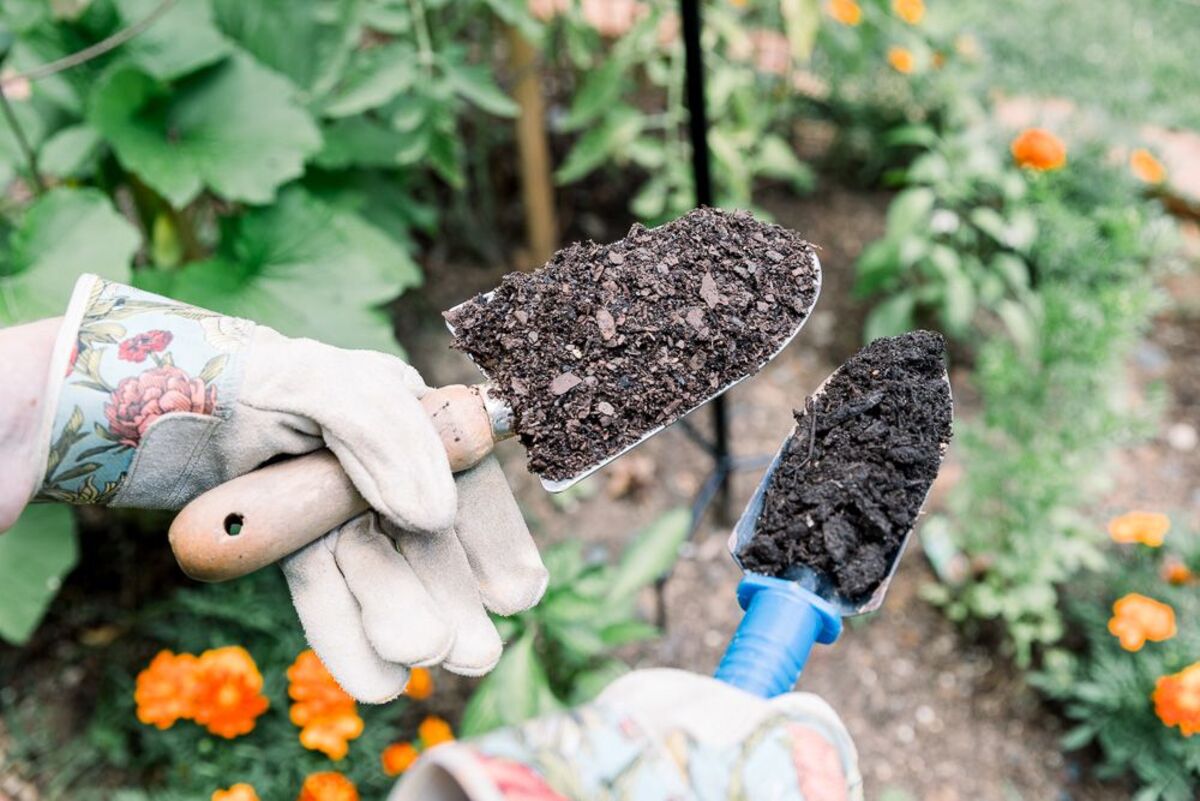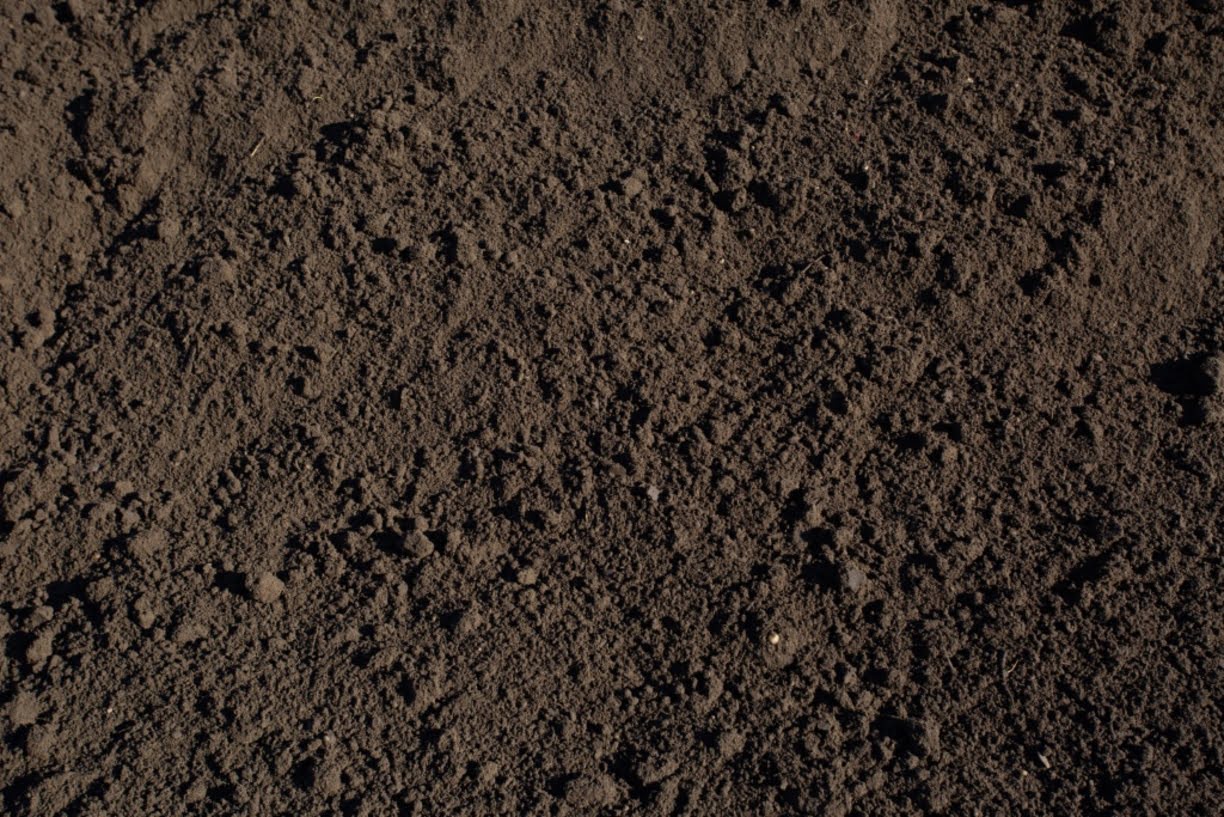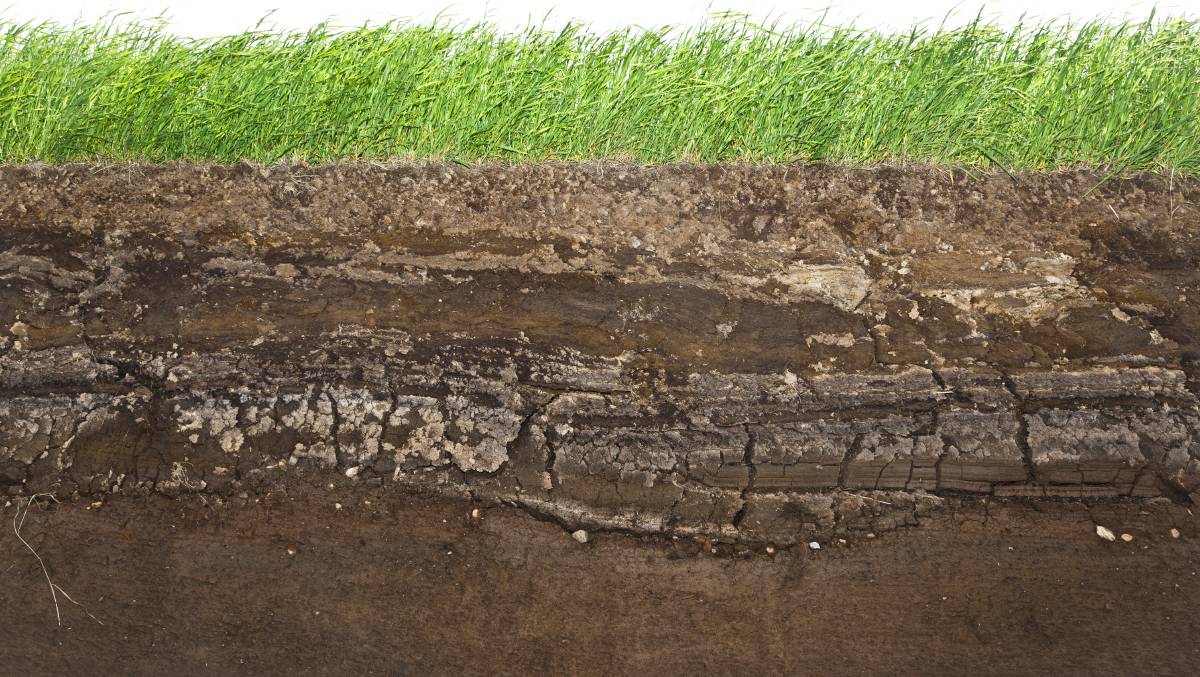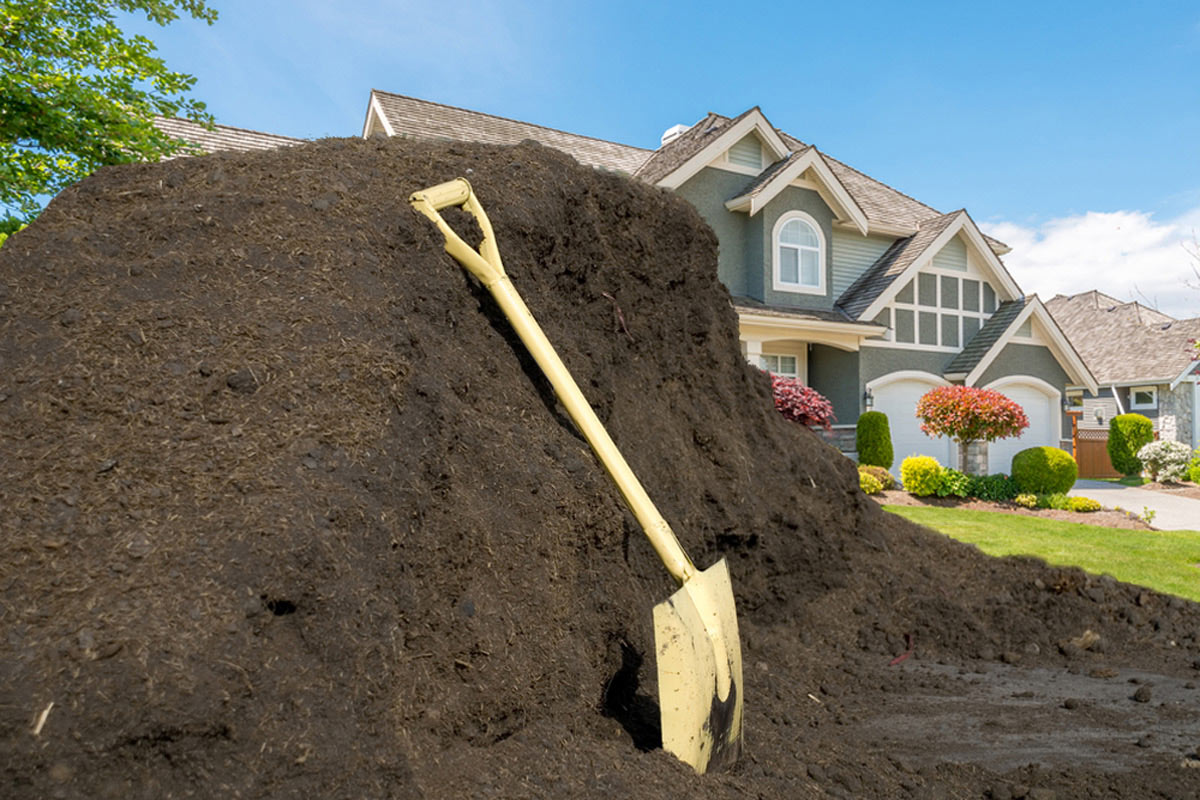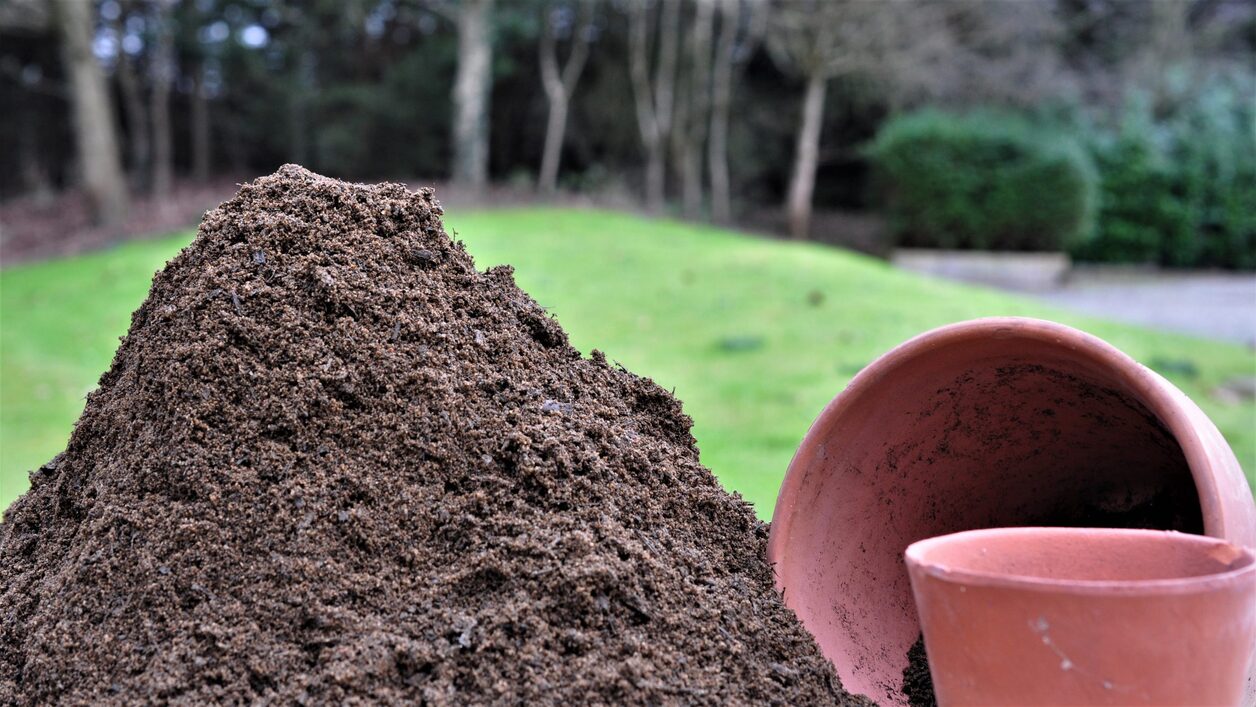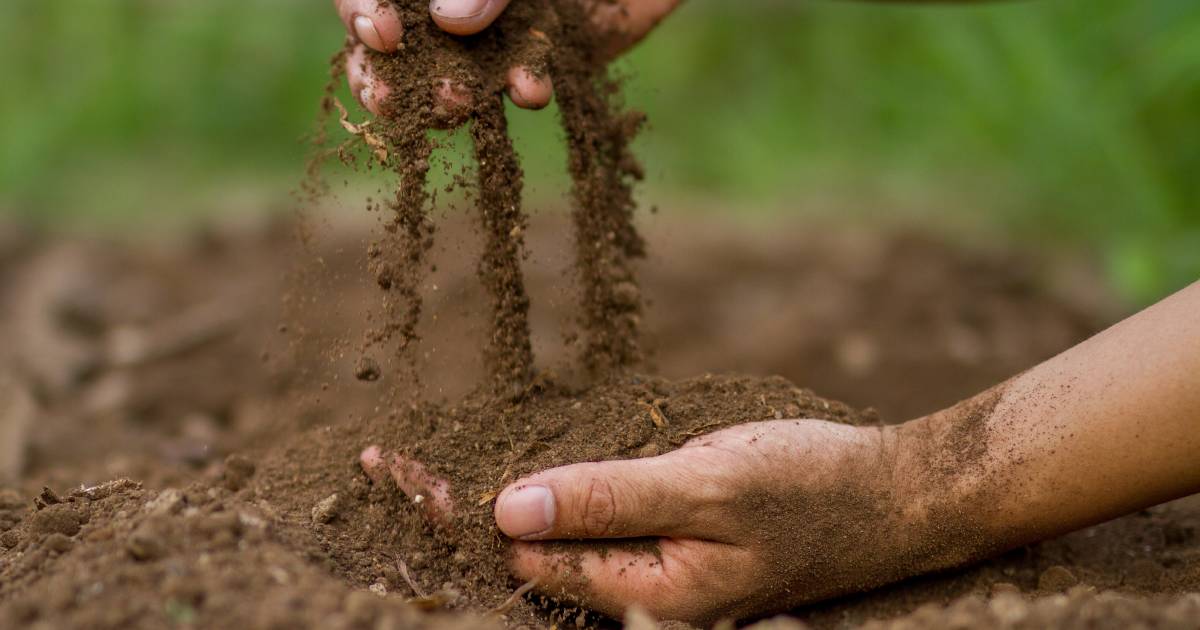Home>Gardening Basics>Understanding Soil>Which Is A Result Of Topsoil Loss?


Understanding Soil
Which Is A Result Of Topsoil Loss?
Modified: February 10, 2024
Learn the impact of topsoil loss and the importance of understanding soil. Discover the consequences and solutions for maintaining healthy and fertile land.
(Many of the links in this article redirect to a specific reviewed product. Your purchase of these products through affiliate links helps to generate commission for Chicagolandgardening.com, at no extra cost. Learn more)
Table of Contents
- Introduction
- Definition of Topsoil Loss
- Causes of Topsoil Loss
- Erosion by Water
- Erosion by Wind
- Agriculture Practices
- Deforestation
- Effects of Topsoil Loss
- Decreased Soil Fertility
- Reduced Crop Yields
- Water Pollution
- Increased Flooding
- Soil Degradation
- Soil Erosion Control Measures
- Conservation Tillage
- Contour Farming
- Terracing
- Windbreaks
- Crop Rotation
- Conclusion
Introduction
Soil is a vital natural resource that plays a critical role in sustaining life on Earth. It provides a foundation for plant growth, acts as a filter for water and nutrients, and contributes to the overall health of ecosystems. However, soil is not a limitless resource. Factors such as erosion, agricultural practices, and deforestation can lead to the loss of topsoil, which is the uppermost layer of soil that is rich in organic matter, nutrients, and microorganisms. Topsoil loss poses a significant threat to our environment, food security, and water quality.
Topsoil loss, also known as soil erosion, occurs when the top layer of soil is dislodged and carried away by natural forces such as water and wind. This process is accelerated by human activities that disturb the land surface, such as unsustainable land management practices and deforestation. The consequences of topsoil loss are far-reaching, affecting not only agricultural productivity but also water quality, biodiversity, and the stability of ecosystems.
In this article, we will explore the causes and effects of topsoil loss, as well as discuss some effective soil erosion control measures. By understanding the importance of preserving and protecting our topsoil, we can make informed decisions and take action to mitigate the detrimental impacts of soil erosion.
Definition of Topsoil Loss
Topsoil loss refers to the process by which the uppermost layer of soil, known as topsoil, is eroded or removed from the land surface. Topsoil is the most fertile and nutrient-rich layer of soil, containing organic matter, microorganisms, and essential nutrients that support plant growth. It typically ranges from a few inches to a foot in depth and is crucial for the growth of crops, forests, and other vegetation.
Soil erosion is a natural process that has occurred throughout Earth’s history. However, human activities have greatly accelerated the rate of topsoil loss in recent decades. Factors such as improper land management practices, intense agricultural activities, deforestation, and construction can contribute to the erosion of topsoil.
When topsoil is eroded, it not only leads to a loss of fertile soil but also negatively impacts the overall health and productivity of the land. The erosion of topsoil can result in a decrease in soil quality, reduced water retention capacity, decreased nutrient availability, and disruption of the soil’s natural structure. As a result, vegetation struggles to grow, leading to reduced crop yields, increased vulnerability to pests and diseases, and the degradation of ecosystems.
Topsoil loss is a global issue that affects both developed and developing countries. It poses a significant challenge to sustainable agriculture, food security, and environmental stability. Therefore, it is crucial to understand the causes and effects of topsoil loss and implement effective soil erosion control measures to mitigate its impacts.
Causes of Topsoil Loss
The loss of topsoil is driven by a variety of factors, both natural and human-induced. Understanding these causes is essential in formulating effective strategies to prevent and mitigate topsoil loss. Here are some of the main causes:
- Erosion by Water: Water erosion is one of the primary causes of topsoil loss. Heavy rainfall, especially on unprotected land surfaces, can lead to the rapid runoff of water, carrying away valuable topsoil. Factors such as slope, soil texture, and vegetation cover play a crucial role in determining the extent of water erosion.
- Erosion by Wind: Wind erosion is another significant cause of topsoil loss, particularly in dry and arid regions. When the soil is loose and lacks vegetation cover, strong winds can pick up and transport the topsoil particles over long distances. This process, known as aeolian erosion, can result in the loss of valuable topsoil.
- Agriculture Practices: Unsustainable agricultural practices contribute significantly to topsoil loss. Intensive tilling, leaving fields bare between crops, and excessive use of synthetic fertilizers and pesticides can degrade the soil structure and accelerate erosion. Poor irrigation practices that result in waterlogging or excessive runoff can also lead to topsoil loss.
- Deforestation: Deforestation, the clearing of forests for various purposes, exposes the soil to erosion. Trees and plants play a crucial role in holding the soil together with their root systems. When these natural barriers are removed, the soil becomes prone to erosion by wind and water.
Other factors that may contribute to topsoil loss include construction activities, improper land management, overgrazing, and mining. All of these factors disturb the natural balance of the soil and increase its vulnerability to erosion.
It is important to note that while natural causes of erosion exist, human activities have significantly exacerbated the rate of topsoil loss. Sustainable land management practices and responsible use of natural resources are key to preventing further degradation of topsoil and preserving the health of our ecosystems.
Erosion by Water
Erosion by water is one of the leading causes of topsoil loss worldwide. It occurs when rainfall or irrigation water flow over the land surface, picking up and carrying away valuable topsoil particles. This process is particularly common in areas with heavy rainfall or sloping terrain.
Several factors contribute to water erosion, including intensity and duration of rainfall, slope gradient, soil texture, and vegetation cover. When rainfall is intense, it can create a higher volume of runoff, leading to increased soil erosion. In addition, steep slopes facilitate faster water flow, making the soil more susceptible to erosion.
Soil texture also plays a crucial role in water erosion. Soil with a higher proportion of fine particles, such as clay, is more susceptible to erosion since it can become compacted and form a hard crust on the surface, preventing water infiltration. On the other hand, coarse-textured soils, such as sandy soils, allow water to pass through more easily, reducing the risk of erosion.
Vegetation cover acts as a natural defense against water erosion. Plants and their root systems help anchor the soil, reducing the impact of rainfall and preventing the detachment and movement of soil particles. When vegetation cover is sparse, such as in agricultural fields or recently cleared land, the soil is more susceptible to water erosion.
Water erosion can result in significant loss of topsoil, leading to a decline in soil fertility and reduced crop productivity. It also has several negative environmental impacts. As the eroded soil is carried away by water, it can end up in nearby water bodies, leading to sedimentation and water pollution. Sediment-laden water can affect aquatic ecosystems by reducing light penetration, smothering aquatic organisms, and disrupting their habitats.
To mitigate erosion by water, various techniques can be employed. Implementing conservation practices such as contour plowing, terracing, and the construction of grassed waterways can help slow down water flow and promote the infiltration of water into the soil, reducing erosion. Additionally, establishing and maintaining vegetative cover, such as cover crops or buffer strips, can significantly reduce the impact of water erosion by providing a protective layer over the soil surface.
Ultimately, preventing erosion by water requires a combination of responsible land management practices, proper soil conservation techniques, and promoting sustainable agricultural practices to minimize the loss of topsoil and preserve the health of our ecosystems.
Erosion by Wind
Erosion by wind is a significant cause of topsoil loss, particularly in dry and arid regions where vegetation cover is sparse. Wind erosion occurs when strong winds pick up and transport loose soil particles over long distances, resulting in the loss of valuable topsoil.
Several factors contribute to wind erosion. The first factor is soil texture. Coarse-textured soils, such as sandy soils, have larger particles that are easily lifted and carried by the wind. In contrast, soils with higher clay or silt content tend to be more resistant to wind erosion due to their smaller particle size and ability to clump together.
The second factor is surface roughness. Smooth surfaces offer little resistance to wind, allowing it to pick up soil particles and carry them away. In contrast, rough surfaces, such as those covered with vegetation or crop residue, create windbreaks and barriers that help to stabilize the soil and reduce erosion.
Other factors that can contribute to wind erosion include the wind speed and duration, as well as the absence of windbreaks or shelterbelts, which are rows of trees or shrubs planted to provide protection from the wind. Strong winds, combined with prolonged dry periods, create favorable conditions for wind erosion, especially in areas where the natural vegetation has been removed.
Wind erosion is not only detrimental to agricultural productivity but also has adverse environmental consequences. The eroded soil particles can be carried over long distances and deposited on neighboring lands or water bodies. This sedimentation can lead to the degradation of aquatic ecosystems, disrupt natural habitats, and cause water pollution.
Several techniques can be employed to mitigate wind erosion. One such technique is the use of windbreaks or shelterbelts. These are rows of trees or shrubs strategically planted to create barriers that slow down wind speed and trap soil particles. Implementing conservation tillage practices, such as no-till or reduced tillage, can also help to minimize soil disturbance and reduce the susceptibility of soil to wind erosion.
In addition, maintaining ground cover through cover crops or crop residue can prevent soil exposure and reduce the risk of wind erosion. Contour plowing and terracing are other effective strategies that can be used to control water runoff and minimize soil erosion by wind.
By implementing these soil conservation measures and adopting sustainable land management practices, we can protect our topsoil from wind erosion, preserve soil fertility, and contribute to the overall health and sustainability of our ecosystems.
Agriculture Practices
Agriculture practices have a significant impact on topsoil loss and soil erosion. Unsustainable agricultural practices can degrade soil quality, reduce fertility, and accelerate the rate of erosion. It is essential to adopt sustainable agricultural practices to minimize erosion and preserve the health and productivity of our soil. Let’s explore some common agricultural practices that contribute to topsoil loss:
- Intensive Tilling: Excessive and intensive tilling, especially in conventional tillage systems, can lead to soil compaction and disruption of soil structure. This makes the soil more vulnerable to erosion by water and wind. Introducing conservation tillage practices, such as no-till or reduced tillage, can help minimize soil disturbance and reduce erosion.
- Bare Soil Exposure: Leaving fields bare between planting seasons leaves the soil exposed to the elements. Without protective vegetation cover, the soil becomes susceptible to erosive forces. Planting cover crops during fallow periods or using crop residues as mulch can help maintain ground cover and reduce erosion.
- Overuse of Synthetic Inputs: Excessive use of synthetic fertilizers and pesticides can disrupt the natural balance of the soil ecosystem. This can affect soil microorganisms and reduce soil health. Imbalanced nutrient levels can also lead to decreased soil fertility and plant nutrient uptake, resulting in reduced crop yields.
- Poor Irrigation Practices: Inefficient irrigation practices can contribute to topsoil loss. Improperly managed irrigation can lead to waterlogging or excessive runoff, both of which can increase the risk of erosion. Implementing proper irrigation techniques, such as drip irrigation or precision sprinklers, can help conserve water and minimize erosion.
To mitigate topsoil loss and promote sustainable agriculture, implementing best management practices is crucial. Some of these practices include:
- Conservation Tillage: Adopting conservation tillage practices, such as no-till or reduced tillage, helps maintain soil structure, reduce erosion, and improve water retention.
- Crop Rotation: Implementing crop rotation helps break pest and disease cycles, improves soil health, and maintains nutrient balance in the soil.
- Cover Crops: Planting cover crops, such as legumes or grasses, during fallow periods provides ground cover, improves soil structure, and reduces erosion.
- Contour Farming: Practicing contour farming involves following the natural contour lines of the land during cultivation. This helps to reduce water runoff and prevent soil erosion.
- Terracing: Constructing terraces on slopes helps to slow down water flow, reduce erosion, and retain moisture in the soil.
- Windbreaks: Planting windbreaks, such as rows of trees or shrubs, helps to reduce wind speed, protect against wind erosion, and provide habitat for beneficial wildlife.
By adopting these sustainable agricultural practices, farmers can minimize topsoil loss, improve soil health, enhance water quality, and ensure long-term productivity of their land.
Deforestation
Deforestation, the clearing of forests for various purposes, is a major contributor to topsoil loss and soil erosion. When forests are cleared, whether for agriculture, logging, or urbanization, the protective cover of trees and vegetation is removed, leaving the soil vulnerable to erosion by water and wind.
Forests play a crucial role in soil conservation. The roots of trees help anchor the soil, preventing its detachment and movement by erosive forces. The canopy of trees also acts as a barrier that intercepts rainfall, reduces the impact of falling drops, and slows down water runoff, decreasing the risk of erosion.
Without the protective cover of trees, the soil is exposed to the elements, leading to increased erosion. Rainfall can hit the bare soil surface with more force, dislodging soil particles and promoting soil runoff. Steep slopes without the stabilizing presence of trees are particularly vulnerable to erosion.
Furthermore, the removal of trees disrupts the natural cycle of nutrients and organic matter in the soil. Forests accumulate organic matter in their leaf litter and decomposing plant material, which enriches the soil with vital nutrients. Deforestation disrupts this cycle, leading to a decline in soil fertility and nutrient content.
Deforestation also has broader environmental impacts beyond topsoil loss and erosion. The loss of forest cover contributes to climate change by reducing the capacity of forests to absorb carbon dioxide, a greenhouse gas. Additionally, deforestation destroys habitats for countless plant and animal species, leading to loss of biodiversity.
To mitigate the detrimental effects of deforestation on topsoil loss, sustainable land management practices must be adopted. Afforestation and reforestation programs can help restore forest cover and protect vulnerable areas from erosion. Implementing agroforestry practices, where trees are planted alongside crops or livestock, provides multiple benefits, such as soil protection, improved microclimates, and diversified income sources for farmers.
Alongside these efforts, policies and regulations need to be put in place to prevent rampant deforestation and encourage responsible land-use practices. By preserving and replenishing our forests, we can safeguard the health of our soil, maintain biodiversity, combat climate change, and ensure a sustainable future.
Effects of Topsoil Loss
Topsoil loss has far-reaching effects on the environment, food production, and overall ecosystem health. The loss of this valuable resource can have significant consequences that impact various aspects of life on Earth. Here are some of the major effects of topsoil loss:
- Decreased Soil Fertility: Topsoil is rich in organic matter, nutrients, and microorganisms, making it the most fertile layer of soil. When topsoil is eroded or lost, the remaining soil becomes less fertile and nutrient-depleted. This reduces the ability of plants to grow and limits agricultural productivity.
- Reduced Crop Yields: Topsoil loss directly affects crop production. As the nutrient-rich layer of topsoil diminishes, plants struggle to obtain the necessary nutrients for healthy growth. This results in decreased crop yields, impacting both food production and economic stability.
- Water Pollution: Topsoil loss can lead to increased sedimentation in water bodies. When eroded soil particles are carried by runoff or wind and deposited in rivers, lakes, and streams, they can impair water quality. Sediment-laden water can disturb aquatic ecosystems, lower oxygen levels, and affect the survival of fish and other aquatic organisms.
- Increased Flooding: Healthy topsoil acts as a sponge, absorbing and retaining water. However, when topsoil is eroded, the land loses its ability to absorb excess water. This can lead to increased surface runoff and heightened flood risk, particularly in areas prone to heavy rainfall. Flooding can cause property damage, loss of infrastructure, and even loss of life.
- Soil Degradation: Topsoil loss contributes to overall soil degradation. The removal of the nutrient-rich layer disrupts the soil ecosystem, reduces soil structure, and alters natural processes. This degradation makes the soil less capable of supporting healthy plant growth and can lead to further erosion and land degradation over time.
These effects of topsoil loss highlight the importance of preserving and protecting this vital resource. Sustainable land management practices, soil erosion control measures, and responsible agricultural practices are crucial in mitigating these negative impacts. By prioritizing soil health and implementing measures to prevent topsoil loss, we can safeguard food security, protect water quality, and promote the long-term sustainability of our ecosystems.
Decreased Soil Fertility
Topsoil loss directly contributes to decreased soil fertility, which has significant implications for agriculture, ecosystems, and sustainable land use. The topsoil layer is rich in organic matter, nutrients, and microorganisms that are essential for supporting plant growth and productivity.
When topsoil is eroded, the remaining soil becomes less fertile. The organic matter content, which provides vital nutrients and improves soil structure, is reduced. Consequently, the soil’s ability to retain water, regulate nutrient availability, and support healthy plant growth is compromised.
The depletion of organic matter in the soil affects the nutrient cycling process. Organic matter serves as a source of nutrients as it decomposes, releasing essential elements such as nitrogen, phosphorus, and potassium. With the loss of topsoil, the availability of these nutrients diminishes, leading to nutrient deficiencies in plants and reduced crop yields.
Additionally, topsoil is home to a diverse range of microorganisms such as bacteria, fungi, and earthworms. These organisms contribute to the decomposition of organic matter, nutrient cycling, and the creation of soil structure. When topsoil is eroded, the biological activity and diversity in the soil are disrupted, further compromising soil fertility.
The consequences of decreased soil fertility extend beyond agriculture. Natural ecosystems rely on healthy soils for nutrient cycling, water filtration, and habitat support. Soil fertility decline can disrupt these ecosystem services, leading to negative impacts on biodiversity, water quality, and overall ecosystem health.
To address the issue of decreased soil fertility, sustainable soil management practices are crucial. Applying organic matter, such as compost or manure, can help replenish nutrients and improve soil structure. Crop rotation, cover cropping, and conservation tillage practices also play a vital role in maintaining soil fertility by reducing erosion, enhancing organic matter content, and promoting a diverse soil microbiome.
Soil testing and nutrient management planning are important tools for optimizing fertilizer applications and addressing specific nutrient deficiencies. Precision agriculture techniques can also help ensure that nutrients are applied at the right time and in the right amounts, minimizing waste and potential environmental impacts.
Protecting and enhancing soil fertility is essential for sustainable agriculture, food production, and environmental stewardship. By implementing soil conservation practices that prevent topsoil loss and prioritize soil health, we can ensure the long-term productivity and sustainability of our land.
Reduced Crop Yields
Topsoil loss has a direct impact on crop yields, affecting agricultural productivity and food production. The topsoil layer, rich in nutrients and organic matter, plays a crucial role in supporting healthy plant growth and maximizing crop yields.
As topsoil erodes, the nutrient content in the soil diminishes. Nutrients such as nitrogen, phosphorus, and potassium, which are essential for plant growth, become less available to crops. This nutrient deficiency directly affects the ability of plants to develop strong roots, create healthy foliage, and produce abundant harvests.
Besides nutrient depletion, topsoil loss can also lead to a decline in soil structure. Soil aggregates, which are groups of soil particles bound together, provide a favorable environment for root penetration, water infiltration, and the exchange of gases. When topsoil erodes, these aggregates break down, resulting in compacted soil that hinders root growth and reduces water-holding capacity.
In addition, topsoil loss increases the vulnerability of crops to drought and waterlogging. The reduced soil water-holding capacity and decreased infiltration rate of eroded soil can result in inadequate moisture availability for plant uptake during dry periods. Conversely, during heavy rainfall events, eroded soil can become waterlogged, depriving plant roots of oxygen and impeding their growth.
The impact of reduced crop yields goes beyond the economic implications for farmers; it affects food security and global food production. As the world’s population continues to grow, maintaining high crop yields is essential to meet the increasing demand for food.
Addressing reduced crop yields requires implementing sustainable agricultural practices and soil conservation strategies. Conservation tillage, such as no-till or reduced tillage, helps to maintain soil structure and reduce erosion, preserving the nutrient-rich topsoil layer. Implementing precision agriculture techniques, such as site-specific nutrient management, can optimize fertilizer use and ensure that crops receive the necessary nutrients.
Crop rotation plays a vital role in preventing nutrient depletion and the buildup of pests and diseases. By alternating crops with different nutrient requirements and pest susceptibilities, farmers can maintain soil fertility and minimize the risk of yield reduction.
Improving soil health through practices such as cover cropping and the addition of organic matter can enhance the physical, chemical, and biological properties of the soil. These practices contribute to soil moisture retention, nutrient availability, and beneficial microbial activity, enhancing the overall resilience of crops to environmental stresses.
By prioritizing soil conservation and adopting sustainable agricultural practices, we can mitigate the impact of topsoil loss on crop yields, ensure global food security, and foster a more sustainable and resilient agricultural system.
Water Pollution
Topsoil loss has a significant impact on water quality, leading to increased water pollution. When topsoil is eroded, the eroded soil particles are carried away by runoff and end up in neighboring water bodies, such as rivers, lakes, and streams.
The sediment-laden water resulting from topsoil loss contributes to water pollution in several ways. Firstly, the presence of eroded soil particles increases turbidity in the water, reducing clarity and light penetration. This reduction in light can interfere with photosynthesis and limit the growth of aquatic plants, affecting the health of ecosystems.
Additionally, the eroded soil particles can carry with them other contaminants such as nutrients, pesticides, and heavy metals. These contaminants can enter water bodies, compromising water quality and potentially harming aquatic organisms and wildlife. Nutrient runoff from eroded soil can lead to eutrophication, causing excessive algae growth, oxygen depletion, and the degradation of aquatic habitats.
Water pollution resulting from topsoil loss has cascading effects throughout the ecosystem. Aquatic organisms may suffer directly from the sedimentation and increased levels of contaminants. Fish and other aquatic species depend on clear water and suitable habitats for their survival and reproduction. The presence of sediment can smother and suffocate these organisms, leading to population decline and loss of biodiversity.
Water pollution from topsoil loss not only affects aquatic ecosystems but also has implications for human health and well-being. Contaminated water sources may impact drinking water quality, leading to health risks for communities that rely on these sources for their water supply. In addition, polluted water bodies may restrict recreational activities, such as swimming or fishing, due to potential health hazards.
To mitigate water pollution resulting from topsoil loss, implementing effective soil erosion control measures is essential. Proper land management practices, such as contour plowing, terracing, and cover cropping, can help reduce topsoil erosion and the subsequent runoff of sediment into water bodies.
Buffer strips or vegetative filter strips planted alongside water bodies can act as a barrier, trapping sediment and filtering out contaminants before they enter the water. Constructing retention ponds or sediment basins can also help capture and control runoff, minimizing its impact on water quality.
Furthermore, adopting responsible agricultural practices, such as implementing precision nutrient and pesticide management, can reduce the amount of these substances that enter water bodies and contribute to pollution. By prioritizing soil conservation and minimizing topsoil loss, we can protect our water resources, support healthy aquatic ecosystems, and promote the well-being of both humans and the environment.
Increased Flooding
Topsoil loss plays a significant role in increasing the risk of flooding in many regions. The loss of topsoil reduces the soil’s ability to absorb and retain water, exacerbating the potential for surface runoff during heavy rainfall events. As a result, areas prone to topsoil loss experience more frequent and severe flooding.
When topsoil is eroded, the soil structure and composition are altered, leading to compacted soil that impairs water infiltration. Instead of being absorbed into the soil, water runs off the surface, accumulating in low-lying areas, rivers, and streams. The reduced ability of the soil to hold water increases the volume and speed of runoff, heightening the risk of flash floods during intense rainfall episodes.
Additionally, eroded topsoil can cause blockages in drainage systems, such as culverts and ditches, further impeding the flow of water. This can result in water pooling in unwanted areas, leading to prolonged periods of inundation and subsequent flood damage.
Flooding induced by topsoil loss can have significant consequences for both urban and rural areas. In urban settings, increased runoff from eroded topsoil can overload stormwater management systems, causing flooding of streets, basements, and infrastructure. This can result in property damage, disruption of services, and economic losses.
In agricultural areas, the impact of increased flooding is felt through crop damage, erosion of valuable topsoil, and interrupted farming operations. Floodwaters can submerge crops, causing plant stress and potential yield loss. The force of the flowing water can erode the remaining topsoil and deposit sediment on fields, further degrading soil quality and compromising future crop productivity.
Furthermore, increased flooding can have environmental consequences. Floods can transport sediment, nutrients, and pollutants from eroded topsoil into nearby water bodies, leading to water pollution and compromising the health of aquatic ecosystems. Flood events can also disrupt habitats, displace wildlife, and alter the natural balance of ecosystems.
To mitigate the risk of increased flooding resulting from topsoil loss, it is crucial to prioritize soil conservation. Implementing soil erosion control measures, such as contour plowing, terracing, and the use of cover crops, can help slow down water runoff, improve soil structure, and reduce the erosion of topsoil. Constructing adequate drainage systems and maintaining natural vegetation in flood-prone areas can also help mitigate flood risks.
By employing these practices and promoting responsible land management, we can minimize topsoil loss, enhance water absorption, and reduce the frequency and severity of flooding events. Protecting and preserving the integrity of our topsoil is essential for mitigating the impacts of increased flooding, safeguarding communities, and maintaining the health of our ecosystems.
Soil Degradation
Topsoil loss is a significant driver of soil degradation, leading to long-term negative impacts on soil health and productivity. Soil degradation refers to the overall decline in the quality, structure, and fertility of the soil, which directly affects its ability to support plant growth and sustain ecosystems.
When topsoil is eroded, the remaining soil becomes more compacted, losing its natural structure and permeability. Compacted soil restricts root penetration and impedes water infiltration and drainage, resulting in poor soil aeration and nutrient availability. The loss of soil structure makes it difficult for plants to access essential resources and can significantly hinder their growth and productivity.
In addition to compacted soil, topsoil loss disrupts the natural balance of soil microorganisms and beneficial soil fauna. These organisms play crucial roles in nutrient cycling, organic matter decomposition, and the formation of soil aggregates. With reduced topsoil, the microbial and faunal communities are negatively affected, further contributing to the degradation of the soil ecosystem.
Soil erosion and topsoil loss accelerate the depletion of organic matter in the soil. Organic matter is essential for soil fertility and nutrient availability. It improves soil structure, water-holding capacity, and nutrient retention. When topsoil is eroded, the nutrient-rich organic layer is lost, resulting in decreased soil fertility and decreased resilience to environmental stresses.
Soil degradation not only affects agricultural productivity but also has far-reaching environmental consequences. Degraded soils have reduced water-holding capacity, increasing the risk of drought and water stress for plants. They are also more susceptible to erosion, further exacerbating topsoil loss and land degradation.
The impact of soil degradation extends beyond agricultural fields. Degraded soil can contribute to increased sedimentation in water bodies, leading to water pollution, reduced water quality, and degradation of aquatic ecosystems. It can also result in the loss of biodiversity, as many species depend on healthy soils for habitat and food sources.
To mitigate soil degradation, implementing sustainable land management practices is crucial. Conservation practices such as cover cropping, crop rotation, and conservation tillage help improve soil structure, enhance organic matter content, and reduce erosion. Additionally, incorporating organic amendments, such as compost or manure, can replenish nutrients and improve soil fertility.
Efforts to prevent soil degradation should also include the adoption of responsible land-use practices, such as maintaining vegetative cover, protecting natural habitats, and avoiding overgrazing or excessive land development. By prioritizing soil conservation and implementing sustainable practices, we can mitigate soil degradation, protect ecosystem health, and ensure the long-term productivity and sustainability of our land resources.
Soil Erosion Control Measures
Controlling soil erosion is crucial for preserving the health and productivity of our land. Implementing effective soil erosion control measures can help mitigate topsoil loss, maintain soil fertility, and protect ecosystems. Here are some key strategies and techniques:
- Conservation Tillage: Conservation tillage practices, such as no-till or reduced tillage, minimize soil disturbance and help preserve soil structure. By leaving crop residues on the soil surface, these practices enhance water infiltration, reduce erosion, and promote organic matter retention.
- Contour Farming: Contour farming involves cultivating crops parallel to the contour lines of sloping land. By creating ridges and furrows that follow the natural contours, water runoff is slowed down, allowing more time for water to infiltrate the soil and reducing the risk of erosion.
- Terracing: Terraces are horizontal or nearly horizontal benches constructed on sloping terrain. They help reduce slope gradient and slow down water runoff, minimizing erosion. Terraces can be used in combination with contour farming to further enhance erosion control.
- Windbreaks: Windbreaks, consisting of rows of trees, shrubs, or grasses planted perpendicular to prevailing winds, act as barriers that reduce wind speed and protect against wind erosion. Windbreaks help to create microclimates, trap eroded soil particles, and provide habitat for beneficial wildlife.
- Crop Rotation: Implementing crop rotation involves the sequential planting of different crops on the same land, which helps break pest and disease cycles and improve soil health. Crop rotation aids in nutrient cycling and reduces the accumulation of pathogens, pests, and weeds, promoting sustainable soil management.
- Cover Crops: Planting cover crops, such as legumes or grasses, during fallow periods or between cash crops, provides protective ground cover that reduces soil erosion. Cover crops help prevent soil compaction, enhance water infiltration, and suppress weed growth, contributing to improved soil health and erosion control.
In addition to these techniques, sustainable land management and responsible agricultural practices play an essential role in controlling soil erosion. Implementing proper irrigation practices, such as using techniques like drip irrigation or precision sprinklers, helps minimize runoff and reduces the erosive impact of water.
Proper nutrient management, including site-specific fertilization and precision application, prevents overapplication and reduces the risk of nutrient runoff into water bodies. Managing livestock grazing by implementing rotational grazing systems and protecting riparian areas also aids in preventing the degradation of soil and vegetation cover.
Educating farmers, landowners, and communities about the importance of soil erosion control and providing resources and support for adopting soil conservation practices are vital steps in promoting sustainable land management.
By combining these soil erosion control measures, utilizing best practices, and promoting sustainable land management approaches, we can protect our topsoil, maintain soil fertility, mitigate erosion, and ensure the long-term health and productivity of our land.
Conservation Tillage
Conservation tillage is a soil cultivation practice that minimizes soil disturbance and helps preserve soil structure, reduce erosion, and promote sustainable land management. Unlike conventional tillage methods that involve intensive plowing or disking, conservation tillage aims to disturb the soil as little as possible. This approach offers several benefits for soil health and erosion control.
In conservation tillage, farmers leave a significant portion of crop residues, such as stalks, leaves, and other plant material, on the soil surface after harvest. By retaining crop residues, the soil is protected from the impact of heavy rain and direct exposure to wind, which can cause soil erosion. The residues act as a protective layer, breaking the force of rainfall and preventing soil particles from being washed away.
By reducing or eliminating plowing or disking, conservation tillage helps maintain the natural soil structure. Traditional tillage methods break up soil aggregates, leading to compaction and decreased porosity. In contrast, conservation tillage practices preserve soil aggregates and pore spaces, allowing for better water infiltration and root penetration.
The improved soil structure resulting from conservation tillage enhances water-holding capacity, reducing the risk of drought stress for plants. As the soil retains more moisture, crops have a better chance of accessing water during dry periods, leading to improved resilience and higher yields.
Not only does conservation tillage help prevent topsoil loss, but it also promotes the retention of organic matter in the soil. Crop residues left on the surface slowly decompose, adding organic material to the soil. This organic matter enhances soil fertility, improves nutrient availability, and supports beneficial soil microorganisms, contributing to the overall health and productivity of the soil.
Adopting conservation tillage practices can offer economic benefits for farmers as well. Reduced tillage operations require less time, fuel, and equipment. By minimizing soil disturbance and retaining crop residues, farmers can also reduce input costs associated with soil erosion control, such as the need for terracing or other erosion control structures.
While conservation tillage offers many advantages, it is important to note that implementing this practice requires careful management and consideration of site-specific conditions. Factors such as soil type, climate, crop rotation, and weed control methods will influence the suitability and success of conservation tillage in a particular agricultural system.
Overall, conservation tillage plays a crucial role in promoting sustainable agriculture and protecting our soil resources. By minimizing soil disturbance, retaining crop residues, and improving soil structure, conservation tillage contributes to erosion control, water conservation, and the long-term health and productivity of agricultural lands.
Contour Farming
Contour farming is an agricultural technique that involves cultivating crops parallel to the contour lines of sloping land. This practice helps reduce soil erosion, prevents water runoff, and preserves soil moisture, making it a valuable strategy for sustainable land management.
By following the natural contours of the land, contour farming creates ridges and furrows that act as miniature dams, slowing down the flow of water during rainfall events. The ridges catch and hold water, allowing it to infiltrate the soil rather than running off the field. This reduces the volume and velocity of water runoff, minimizing erosion and preserving valuable topsoil.
Contour farming is especially effective on sloping terrain where water runoff can be significant. Without this practice, water would flow downhill in a concentrated manner, creating erosion channels and carrying away fertile soil. By redirecting water flow along the contour lines, contour farming helps distribute water evenly across the field, minimizing erosion and improving water infiltration.
In addition to erosion control, contour farming helps conserve soil moisture. As water is captured and absorbed into the soil, it is made available to plants, promoting healthier growth and reducing the need for supplemental irrigation. The ridges formed in contour farming act as physical barriers, allowing water to pool and soak into the soil, increasing its water-holding capacity.
Contour farming also contributes to soil fertility and enhances nutrient management. By reducing erosion, the loss of nutrient-rich topsoil is minimized, ensuring that vital nutrients remain in the field and are available for plant uptake. The preservation of topsoil through contour farming helps maintain soil structure, organic matter content, and microbial activity, promoting overall soil health.
In addition to its agricultural benefits, contour farming has environmental advantages. By reducing soil erosion, less sediment enters nearby rivers or streams, mitigating water pollution and enhancing water quality. This practice also helps preserve the natural landscape and prevent the loss of fertile topsoil, preserving biodiversity and supporting a healthy ecosystem.
Implementing contour farming requires careful planning and consideration of the specific field characteristics. Farmers must assess the slope of their land, plan the placement of ridges and furrows, and ensure proper maintenance to prevent erosion pathways from forming. The appropriate crop choices and rotations should also be considered to enhance the effectiveness of contour farming.
Overall, contour farming is a valuable technique for sustainable land management, offering erosion control, improved water infiltration, soil moisture conservation, and enhanced nutrient management. By adopting this practice, farmers can protect their land, promote soil health, and contribute to the long-term sustainability of agricultural systems.
Terracing
Terracing is a highly effective soil conservation technique that involves constructing horizontal or nearly horizontal benches along the contours of sloping land. By creating terraces, this practice helps reduce water runoff, control erosion, and improve soil moisture retention, making it an essential tool for sustainable land management.
The construction of terraces on sloping terrain achieves multiple benefits. Firstly, terraces flatten the slope of the land, providing a series of level surfaces. This reduces the velocity of water runoff, allowing it to infiltrate the soil rather than flowing down the slope. By slowing down water runoff, terracing helps to prevent soil erosion and the loss of precious topsoil.
With terraces in place, water is retained on each bench, allowing it to be absorbed by the soil and taken up by crops. The flat surfaces of the terraces facilitate water infiltration, reducing the risk of surface runoff and improving water availability to plants. This improved soil moisture retention benefits crop growth, particularly during dry periods, enhancing plant resilience and productivity.
Terracing has additional advantages for nutrient management. With reduced erosion, the loss of nutrient-rich topsoil is minimized, helping to preserve the fertility of the land. The leveled terraces also prevent nutrient leaching by allowing better control over the movement of water and nutrients, ensuring their availability to plants and minimizing environmental pollution.
Besides erosion control and soil moisture conservation, terracing provides other benefits. It promotes more efficient water distribution across the field, preventing concentrated flow and reducing the risk of localized flooding or waterlogging. Terraces can also help to increase the effective planting area, allowing more land to be cultivated and optimizing land use.
Implementing terracing requires careful planning and engineering. The slopes of the land, soil properties, and climatic conditions must be considered when designing and constructing the terraces. Terraces are typically built with retaining walls or earthen banks to support the leveled surfaces. Proper maintenance is crucial to prevent erosion and maintain the integrity of the terraces over time.
Terracing is widely used in hilly and mountainous regions where erosion and water runoff are common challenges. This practice is particularly beneficial for growing crops on steep slopes, preventing soil loss and improving the agricultural productivity of the land.
In addition to its agricultural advantages, terracing also has environmental benefits. By minimizing erosion, terracing reduces sedimentation and the transport of pollutants into nearby water bodies, enhancing water quality and protecting aquatic ecosystems. The preservation of topsoil through terracing also helps maintain the natural landscape and prevent the loss of valuable soil resources.
Overall, terracing is a valuable soil conservation technique that provides erosion control, improved water infiltration, soil moisture retention, and enhanced nutrient management. By implementing this practice, farmers can protect their land, promote sustainable agriculture, and contribute to the long-term sustainability of their farming systems.
Windbreaks
Windbreaks are an effective soil conservation measure that involves planting rows of trees, shrubs, or grasses perpendicular to prevailing winds. Also known as shelterbelts, windbreaks act as natural barriers that reduce wind speed, provide protection from wind erosion, and offer numerous benefits for sustainable land management.
One of the primary functions of windbreaks is to slow down the speed of wind. When wind encounters a windbreak, it is forced to pass through or over the trees, which creates turbulence and reduces the velocity of the wind. This disruption in wind speed helps prevent soil erosion by reducing the erosive force of wind on exposed soil surfaces.
Windbreaks provide an effective shield that protects fields and crops from the damaging effects of strong winds. They create a microclimate behind the windbreak, characterized by reduced wind strength, increased humidity, and moderated temperatures. This sheltered environment aids in reducing water evaporation, preventing desiccation of crops, and minimizing wind damage to plants.
By reducing wind speed, windbreaks help to trap and hold snow. This accumulation of snow provides a significant moisture source during the melting season, contributing to increased soil moisture and groundwater recharge. This enhanced soil moisture benefits crops and vegetation, especially in arid or semi-arid regions where water availability is limited.
Windbreaks can also influence agricultural production by improving pollination. By reducing wind speed and creating a more sheltered environment, windbreaks help to prevent the disruption of pollen movement, ensuring efficient pollination of crops by insects or wind-dependent species.
Beyond their role in soil conservation and agricultural benefits, windbreaks offer additional advantages. They contribute to biodiversity conservation by providing habitat and food sources for a variety of wildlife species. Windbreaks also enhance the aesthetic appeal of the landscape, reduce noise levels, and act as visual screens.
Implementing windbreaks requires careful planning and consideration of site-specific factors. Factors such as wind direction, wind speed, and soil moisture conditions need to be assessed to determine the appropriate placement, density, and height of the trees or shrubs. Native species that are well-adapted to the local climate and soil conditions are often recommended to optimize benefits and long-term sustainability.
Windbreaks can be established in various agricultural settings, including crop fields, orchards, and pasturelands. Additionally, they can be used in non-agricultural settings to protect homes, gardens, roads, and sensitive environmental areas from wind erosion and damage.
Overall, windbreaks provide valuable protection against wind erosion, enhance microclimatic conditions, conserve soil moisture, promote biodiversity, and improve agricultural productivity. By incorporating windbreaks as part of sustainable land management practices, farmers and landowners can effectively mitigate wind-induced soil erosion and contribute to the long-term sustainability of their land.
Crop Rotation
Crop rotation is a systematic approach to the sequential planting of different crops in the same area over a defined period. This practice provides numerous benefits for soil health, nutrient management, pest control, and overall sustainable agriculture.
One of the key advantages of crop rotation is the disruption of pest and disease cycles. Different crops have varying susceptibility to pests and diseases. By rotating crops, farmers can break the lifecycle of pests and reduce the buildup of pathogens in the soil, minimizing the need for chemical pesticides. This natural pest control strategy helps maintain ecosystem balance and reduces the risk of outbreaks.
Crop rotation also supports soil health by improving nutrient cycling. Different crops have different nutrient requirements and interact with the soil and its microbial communities in unique ways. By rotating crops, nutrient imbalances and depletion are mitigated, enhancing soil fertility and minimizing the need for synthetic fertilizers.
Furthermore, crop rotation helps manage soilborne diseases and nematodes. Certain crops can be susceptible to specific pathogens. By rotating crops, the pathogens that target one crop have a reduced chance of affecting subsequent crops. This practice contributes to reduced disease pressure, healthier plants, and improved overall crop yields.
Legumes, such as peas and beans, are commonly included in crop rotation systems. These nitrogen-fixing plants have the unique ability to form symbiotic relationships with soil bacteria, known as rhizobia, which convert atmospheric nitrogen into a plant-usable form. When legumes are included in the rotation, they improve soil fertility by enriching it with nitrogen, reducing the need for synthetic nitrogen fertilizers.
Crop rotation helps improve soil structure and reduce the risk of erosion. Different crops have different root structures and behaviors. For example, deep-rooted crops can help break up compacted soil layers, improve water infiltration, and enhance soil aeration. This improved soil structure enhances soil resilience, water-holding capacity, and overall productivity of the land.
Implementing a successful crop rotation plan requires careful consideration of crop choices, their nutrient requirements, and their compatibility within the existing farming system. Farmers need to evaluate factors such as plant families, growth habits, market demands, and pest management strategies to create an effective and sustainable rotation plan.
Crop rotation is a versatile practice applicable to various agricultural systems, ranging from small-scale organic farming to large-scale mechanized operations. It provides a low-input, environmentally friendly approach to cultivation, contributing to soil conservation, water quality preservation, and biodiversity promotion.
Incorporating crop rotation into agricultural practices not only benefits farmers by optimizing yield potential and reducing input costs but also supports the long-term sustainability of agricultural systems, nurturing healthier soils, and fostering resilient farming communities.
Conclusion
Understanding the importance of soil health and implementing effective soil erosion control measures is vital for sustainable land management and the preservation of our environment. Topsoil loss poses significant challenges to agriculture, food security, water quality, and ecosystem stability. By addressing the causes and effects of topsoil loss, we can take proactive steps to protect and conserve our soil resources.
Through practices such as conservation tillage, contour farming, terracing, windbreaks, crop rotation, and other soil conservation techniques, we can mitigate topsoil loss, reduce erosion, and maintain soil fertility. Conservation practices help preserve the integrity of the soil structure, enhance water infiltration, retain soil moisture, and protect against wind and water erosion. Implementing these practices requires careful planning, management, and commitment from farmers and landowners.
Furthermore, responsible agricultural practices, such as proper nutrient management, cover cropping, and sustainable land-use practices, are essential components of soil conservation. These practices not only improve soil health but also contribute to water quality preservation, biodiversity conservation, and sustainable food production systems.
Addressing topsoil loss and soil erosion is a collective effort that involves farmers, landowners, researchers, policymakers, and consumers. Education and awareness play a crucial role in promoting the adoption of sustainable land management practices and encouraging the implementation of soil conservation techniques. By prioritizing soil health and conservation, we can ensure a resilient and productive agricultural sector, protect our ecosystems, and contribute to a sustainable and food-secure future.
